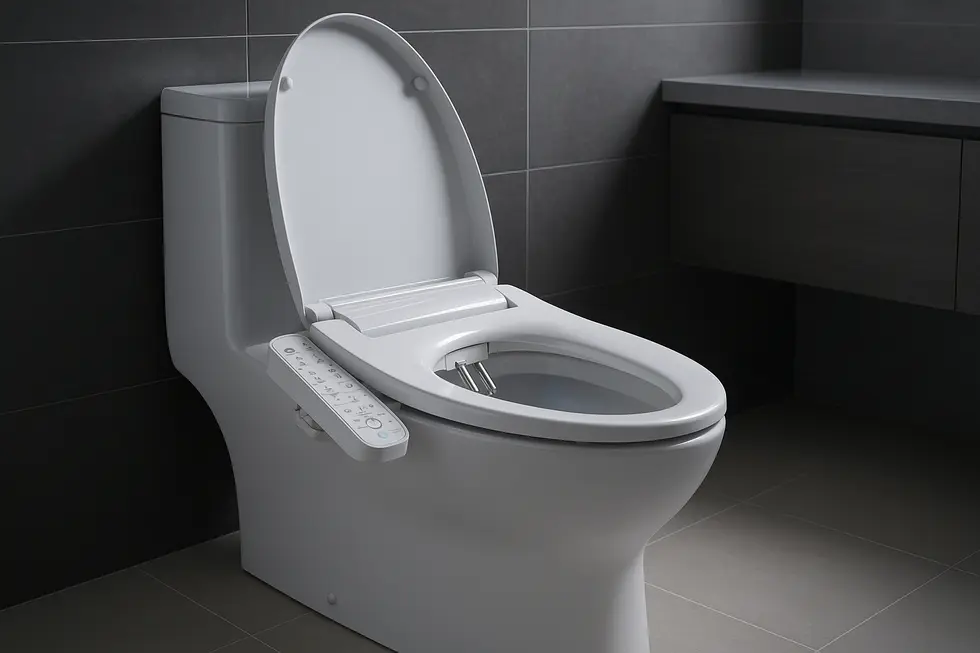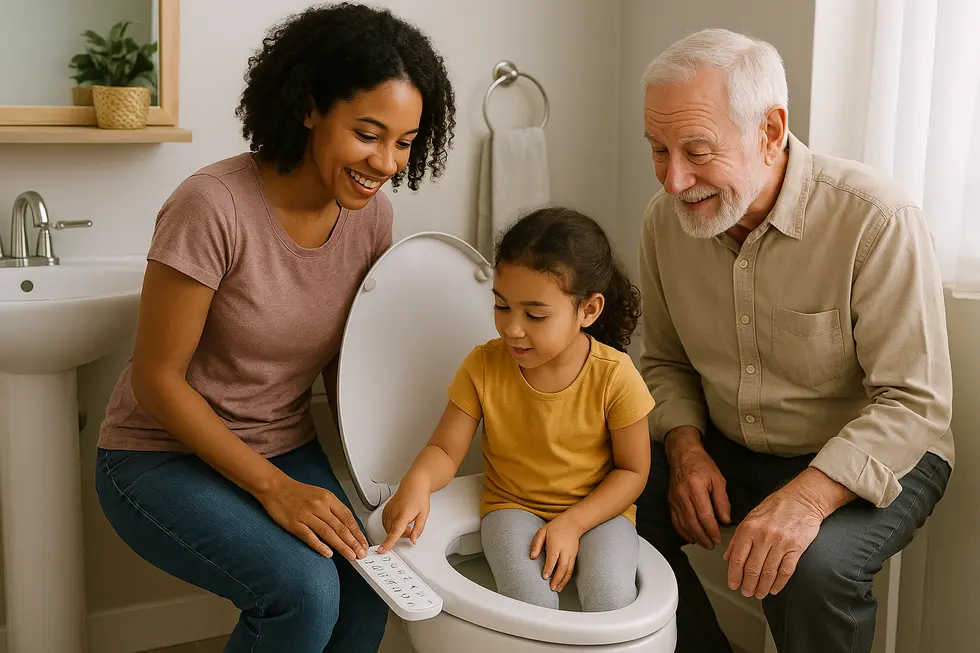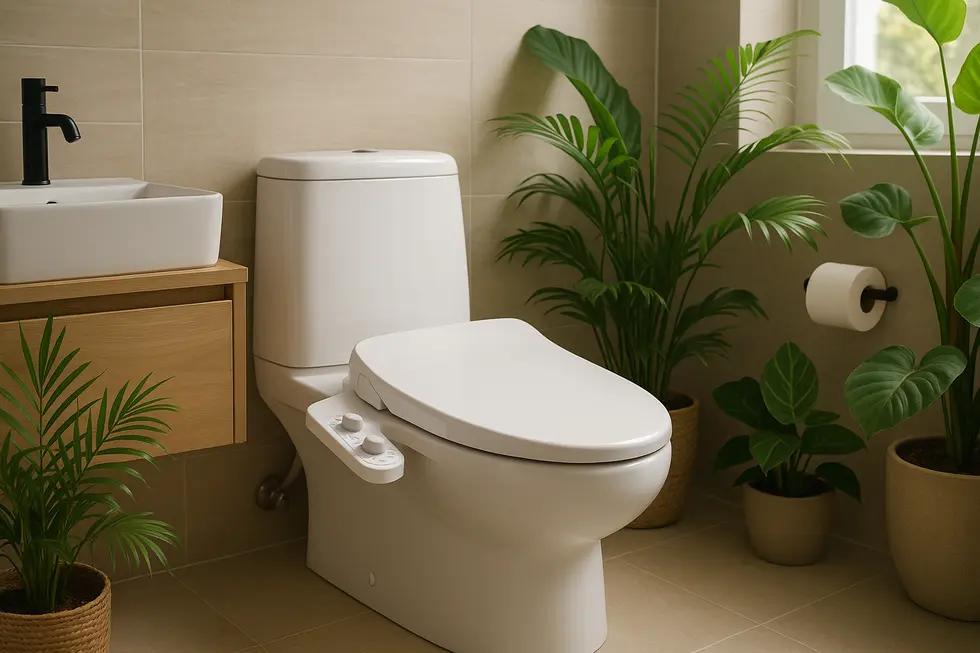Bidet Attachment, Bidet Seat
Reimagining Clean: The Rise of Advanced Bidet Attachments
Advanced bidet attachments have transformed personal hygiene, offering a luxurious alternative to traditional methods. As families prioritize cleanliness and environmental sustainability, these devices become essential tools in modern bathrooms. This article examines the technological advances in bidet design, trends in market and consumer adoption, and their broader environmental and societal impacts.
From Hinges to Heated Air: How Cutting-Edge Engineering Elevates the Modern Bidet Attachment

A decade ago, upgrading a toilet with a bidet meant wrestling with rigid brackets and accepting a single, cold spray. Recent engineering breakthroughs have rewritten that experience, folding luxury-grade mechanics into attachments slim enough to tuck under an existing seat.
At the heart of this evolution is the lift-hinge platform. A discrete pivot lets the entire unit swing upward, exposing the porcelain rim and the spray wands in one motion. Regular wipe-downs now take seconds, extending the working life of internal seals and eliminating the biofilm that can plague fixed mounts. Because the hinge rides on a slide-in rail, users can fine-tune nozzle reach or even transfer the attachment to another bathroom without hunting for extra hardware.
Spray technology itself has advanced just as dramatically. Twin, stainless nozzles already offered front and rear cleansing, yet engineers added self-purging guard gates that blast debris off the wands before and after every session. Some nozzles now oscillate or pivot vertically, widening coverage while keeping pressure gentle—an asset for users recovering from surgery or managing chronic skin sensitivities.
Comfort features once reserved for full electronic seats have trickled down as well. Instant ceramic heaters deliver a continuous stream of warm water without the bulky reservoir of earlier designs, trimming energy use while freeing space for a slim profile. Integrated air dryers use variable-speed fans and thermostatic controls to whisk away moisture, letting households slash paper consumption without sacrificing that crisp, dry finish.
Smart sensors close the hygiene loop. Infrared arrays can lift lids automatically, an underrated benefit for caregivers assisting children or elders. Memory presets then recall each family member’s preferred water temperature, spray strength, and dryer warmth at the touch of a backlit button.
These layered innovations transform the humble attachment into a precision hygiene appliance, marrying mechanical ingenuity with intuitive electronics. For a broader overview of models that fit nearly any bowl shape, this concise bidet attachment guide breaks down sizing and compatibility considerations.
Readers who want to compare advanced features side by side can consult this independent luxury lineup (https://bidetking.com/collections/luxury-class-bidet-seats).
From Niche Luxury to Bathroom Staple: The Rising Market Demand for Advanced Bidet Attachments

Just a decade ago, the idea of adding a high-tech cleansing nozzle to a Western toilet felt exotic; today it is edging toward mainstream. Analysts forecast the global bidet sector to climb from roughly $22 billion in 2024 to more than $32 billion by 2033—a steady 4 % compound annual growth rate that outpaces many other bathroom categories. Even more striking is the smart-toilet segment, which folds advanced bidet attachments into an integrated package and is projected to expand at over 8 % annually. Two forces fuel this acceleration: heightened hygiene awareness and rapid feature innovation.
Pandemic-era emphasis on touch-free cleaning pushed consumers to reassess paper-only routines. Adjustable water temperature, variable pressure, and self-sanitising nozzles now answer that concern while adding tangible comfort. When attachments started offering warm air drying, automatic seat sensors, and in-bowl deodorising, the conversation shifted from simple cleanliness to an upgraded daily ritual comparable to upgrading from a flip phone to a smartphone.
Cultural influence also plays a part. In Japan, where more than 80 % of homes include bidet-equipped toilets, visiting tourists experience the convenience first-hand and return home eager to replicate it. Australia and parts of Europe show similar adoption curves, with North America following rapidly once retailers improved availability and DIY installation guides removed the intimidation factor. Shoppers can now scroll through online marketplaces or specialty plumbing sites and find an attachment that snaps beneath an existing seat in minutes—no electrician required. For readers curious about purchase channels, this overview of buying options in the United States highlights typical price ranges and shipping considerations.
Demographics reveal another driver: aging populations and mobility-challenged users appreciate hands-free operation and personalised presets. Sustainability advocates add momentum by noting reduced toilet-paper consumption and lower septic-tank load. Combined, these factors suggest the advanced bidet attachment is transitioning from indulgence to expected fixture, setting the stage for manufacturers to layer even more intelligent functions in coming product cycles—voice control, health-tracking sensors, and grey-water optimisation may be next. Market observers therefore view the category as resilient, health-centric, and ripe for continued growth (GlobeNewswire).
From Trees to Treatment Plants: How Advanced Bidet Attachments Reshape Our Environmental and Social Footprint

Every spray of an advanced bidet attachment quietly rewrites the resource equation that has long governed bathroom habits. The most visible shift is paper: households that switch from exclusive wiping to targeted washing report drops of up to 75 % in toilet-paper use. Each untouched roll represents trees left standing, chemicals not discharged during bleaching, and diesel trucks spared another delivery run. Less paper also means lighter trash bags and landfills that fill more slowly—small daily choices scaling into measurable ecological relief.
Yet water, paradoxically, is where bidets score their greatest environmental win. Producing a single roll of toilet paper consumes nearly 37 gallons of water, far exceeding the few ounces released during a wash cycle. Over a year, the attachment’s direct water draw is typically one-eighth of the hidden water embedded in the paper it displaces, making it a net saver in drought-prone regions.
Municipal systems benefit as well. Fewer shredded fibers travel through pipes, so clogs decline, energy-hungry grinders run less often, and treatment plants process lower volumes of suspended solids. That operational ease lengthens infrastructure life, saving tax money otherwise earmarked for emergency repairs.
Social ripple effects accompany the environmental gains. Skin irritation and infection risks drop when residents cleanse with warm, adjustable sprays instead of abrasive dry wiping. Improved comfort boosts dignity for seniors, new mothers, and people with mobility challenges, broadening hygiene equity within communities. The financial story aligns with well-being: initial hardware costs are recouped in one to two years through reduced paper purchases, turning sustainability into a budget ally. Readers curious about cost break-downs and long-term advantages can explore this concise overview of the benefits of bidet toilet attachments.
Finally, embracing advanced bidets nudges cultural norms toward responsible consumption. Installing a device that visibly conserves resources sparks conversation, normalizes eco-friendly routines, and reinforces the idea that comfort and conservation are not mutually exclusive. As more households adopt these attachments, collective impact magnifies—less deforestation, smaller carbon footprints, smoother sewage operations, and healthier people—proving that meaningful change can flow from the simplest fixture in the home (source: https://www.jxjlondon.com/faq-3).
Final thoughts
Incorporating advanced bidet attachments into family bathrooms offers enhanced hygiene, comfort, and sustainability. These innovative designs not only elevate personal care but also support environmental conservation and societal well-being. As adoption grows, these devices signify a shift towards more conscientious living environments.
Experience a new standard of clean with PEGABidet—designed for comfort, safety, and independence. Join thousands who trust us to make personal care simple and dignified. Contact us contact@pegabidet.com
About us
PEGABidet is a brand owned by L.A NEXTGEN LLC, based in California. We design intuitive, hygienic, and accessible bathroom solutions that prioritize safety, dignity, and independence. Our mission is to make personal care effortless and empowering for people at every stage of life.

